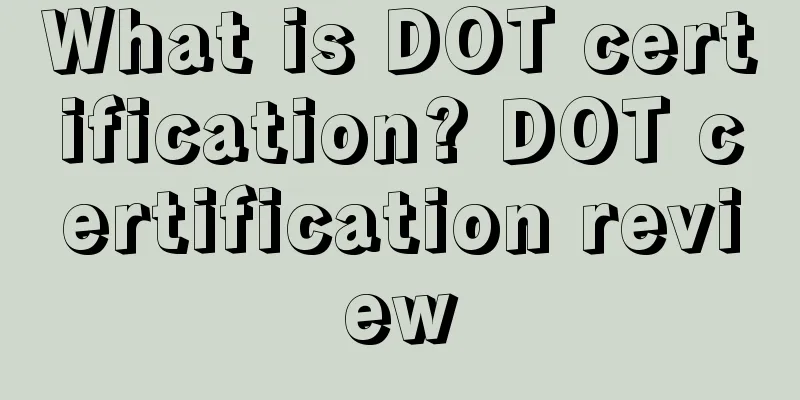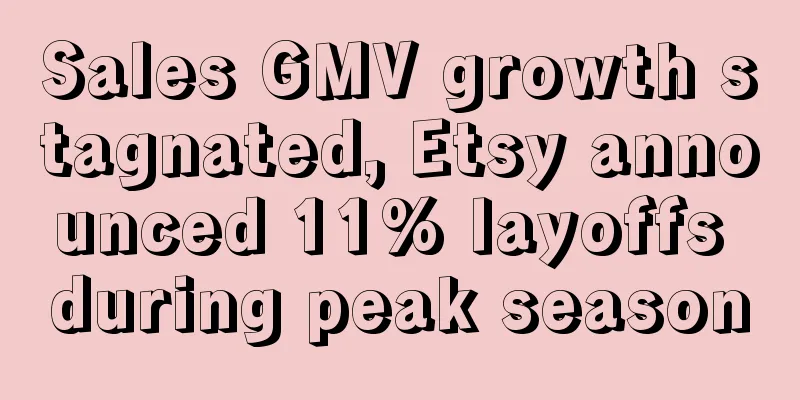What is DOT certification? DOT certification review

|
The DOT certification system is the Federal Motor Vehicle Safety Standards (FMVSS). DOT certification is a mandatory certification, which means that all motor vehicles and accessories sold in the United States must pass DOT certification and have the DOT logo. About DOT Certification DOT is the abbreviation of the United States Department of Transportation, headquartered in Washington. As a functional department of the US government, the US Department of Transportation mainly develops and improves regulations related to transportation and transport to meet the needs of the environment and national defense. At the same time, the Department of Transportation is also a basic department of the federal government, responsible for formulating and managing relevant policies and projects to protect and improve the safety, appropriateness and effectiveness of transportation system services. The Department of Transportation has a large organizational structure and many functional departments, involving affairs in various fields. It has the Federal Highway Administration, the Rail Transportation Administration, the Federal Aviation Administration, the Maritime Administration, the Office of the Inspector General and other departments, with 60,000 employees across the United States. The U.S. Department of Transportation is responsible for formulating traffic regulations, making a series of regulations for various means of transportation and dangerous goods transported into the United States, and issuing relevant approval certificates. According to DOT requirements, transportation vehicles (cars, trucks, trailers, buses, motorcycles, etc.) and their parts (brake hoses, brake fluids, lamps, tires, seat belts, seats, helmets, triangular warning signs, etc.) exported to the United States must be registered and reviewed by the U.S. Department of Transportation before they can enter its market. DOT certification features 1. The United States publishes all its standards, regulations, and bills for free; 2. It is a self-certification process, where the manufacturer determines whether the product meets the standards according to its published regulations; 3. During the certification process, the enterprise is responsible for its data, and the DOT does not supervise the entire testing process; 4. The Ministry of Transport will not issue any certificates to applicants; 5. Loose entry and strict exit: Annual conformity testing is a powerful means to check the effectiveness of the manufacturer's self-certification; 6. Market supervision is very strict. Relevant US agencies will conduct random inspections in the market every year. Once non-compliance is found, the punishment will be quite severe; 7. The contact between the Ministry of Transportation and the manufacturer is implemented through the manufacturer's agent in the United States. For more information, please consult Hangzhou Weiwo engineers. Certified Product Catalog FMVSS 101 Controls and Displays; FMVSS 123 Motorcycle Controls and Displays; FMVSS 103 Windshield defrost and defogging systems; FMVSS 104 Windshield Wiper and Washer Systems; FMVSS 111 rearview mirrors; FMVSS 105 Hydraulic brake systems; FMVSS 106 brake hose; FMVSS 116 Motor Vehicle Brake Fluid; FMVSS 121 Air Brake Systems; FMVSS 122 Motorcycle Braking Systems; FMVSS 135 Passenger car brake systems; FMVSS 109 New pneumatic tires; FMVSS 110 tire and rim selection; FMVSS 117 Retreaded Pneumatic Tires; FMVSS 119 Pneumatic tires for vehicles (excluding passenger cars); FMVSS 120 Motor vehicle (excluding passenger cars) tire and rim selection; FMVSS 129 New Passenger Car Non-Pneumatic Tires; FMVSS 138 Tire Pressure Monitoring Systems; FMVSS 125 warning devices; FMVSS 108 Luminaires, reflectors, and ancillary equipment; FMVSS 113 Hood locking device; FMVSS 114 Anti-theft devices; FMVSS 131 Pedestrian Safety Devices for School Buses; FMVSS 124 Accelerator Control Systems Automotive Engineering; FMVSS 102 Transmission shift lever sequence, starter interlock mechanism and speed change; FMVSS 118 Power-operated window systems; FMVSS 209 Seat belt assemblies; FMVSS 210 Seat belt assembly anchorage points; FMVSS 213 Child Restraint Systems; FMVSS 225 Child Restraint System Anchorage Points; FMVSS 202 Head Restraint Automotive Engineering; FMVSS 207 Seating Systems; FMVSS 222 School Bus Occupant Seating and Crash Protection; FMVSS 203 Crash protection of the driver from steering control systems; FMVSS 204 Rearward displacement of steering controls; FMVSS 201 Occupant protection in vehicle interior collisions; FMVSS 208 Occupant crash protection; FMVSS 214 side impact protection; FMVSS 224 rear impact protection; FMVSS 223 rear impact protection; FMVSS 216 Passenger car roof compressive strength; FMVSS 220 Rollover protection for school buses; FMVSS 205 Glass materials; FMVSS 206 Door locks and door retaining assemblies; FMVSS 221 Body joint strength for school buses; FMVSS 218 Motorcycle Helmets; FMVSS 212 Installation of windshield glass; FMVSS 219 Interference in the windshield area; FMVSS 217 Passenger vehicle emergency exits and windows securing and releasing; FMVSS 301 Fuel System Integrity; FMVSS 303 Compressed Natural Gas Vehicle Fuel System Integrity; FMVSS 304 Integrity of Compressed Natural Gas Vehicle Fuel Tanks; FMVSS 305 Electric vehicles—Electrolyte splash and electric shock protection; FMVSS 302 Combustion Characteristics of Automotive Interior Materials; FMVSS 401 Passenger car luggage compartment interior opening mechanism; FMVSS 500 Low-speed vehicles (4-wheel vehicles with speeds between 20mph--35mph). DOT supervisory investigation of products 1. The Office of Vehicle Safety Compliance (OVSC) conducts random inspections of motor vehicles and parts every year to review the validity of manufacturers' DOT certifications and ensure that products meet the minimum requirements of FMVSS. 2. Products entering the U.S. market will be inspected at least once every five years. 3. OVSC investigates consumer complaints regarding safety issues and if it suspects a discrepancy, it will ask the manufacturer what reasonable measures they have taken and how they have actually proved it. Punitive measures 1. If the manufacturer cannot prove that it has taken practical and effective measures to ensure that its vehicles or components comply with the regulations, it will be fined. 2. Each single non-compliance will be fined $6,000. If there is a series of violations, the penalty will be $16,375,000. 3. Manufacturers who conceal or fail to report safety defects in motor vehicles or parts that cause casualties or serious bodily injury, or provide false reports, will be held criminally liable, with the maximum criminal penalty being 15 years in prison. Certification Process The process of submitting a Federal Motor Vehicle Safety Standards (FMVSS) compliance application to DOT consists of the following steps: 1. The manufacturer designates a DOT application agent with permanent residency in the United States, who will participate in all contacts with the DOT during the compliance application process. 2. Submit agent designation documents, agent approval documents, and Federal Motor Vehicle Safety Standards (FMVSS) compliance application to DOT. 3. Randomly select samples and send them to a DOT-approved contracted laboratory for testing. 4. The laboratory submits a specific product testing plan to DOT’s OVSC and begins testing after approval. 5. If any problems are encountered during testing, the laboratory will submit a preliminary evaluation report and a compliance investigation report to the manufacturer applying for testing, and put forward suggestions for product improvement. 6. The manufacturer makes improvements to the product and resubmits samples for re-testing until they finally pass the test. 7. OVSC and DOT approve the manufacturer's compliance application, allowing the product to legally enter the U.S. market. 8. OVSC will conduct random inspections of motor vehicles and parts every year to review the validity of DOT certifications held by manufacturers to ensure that products meet the minimum performance and labeling requirements specified in the FMVSS standards. The above is the general operation process of DOT certification and laboratory testing of motor vehicles and parts. Depending on the type of product and specifications, there will be differences in the details of the application process. Origin and current situation The DOT certification system, namely the Federal Motor Vehicle Safety Standards (FMVSS), began in 1968. The National Highway Traffic Safety Administration (NHTSA) of the U.S. Department of Transportation is responsible for formulating/revising the standards and implementing them. DOT certification is a mandatory certification, which means that all motor vehicles and accessories sold in the United States must pass DOT certification and have the DOT logo. After more than 30 years of practical application, DOT certification has gradually expanded from being implemented only in the United States to the entire North America. Today, in the eyes of North American consumers, the DOT code molded on the sidewall is a label that promises quality, in other words, a quality guarantee issued by the tire manufacturer. Therefore, they take it for granted and are happy to accept that tires with DOT codes are sold at higher prices than tires without DOT codes. In the eyes of motor vehicle and parts manufacturers, the DOT code represents a responsibility - the product unconditionally meets all applicable provisions of the Federal Motor Vehicle Safety Standards (FMVSS) regarding minimum performance requirements and product identification requirements. In fact, DOT certification is a market game rule that embodies the business spirit of "free trade, responsibility, and sharing benefits." Of course, for motor vehicle and parts manufacturers, DOT certification is as important as the "stepping stone" and "access permit" for motor vehicle and parts products to enter the North American market. significance The significance of the DOT mark is that the abbreviation DOT is used as a symbol to indicate that the product with the DOT mark meets the main requirements of the relevant US.DOT directive (FMVSS MGP), and is used to prove that the product has passed the corresponding test/or the manufacturer's test statement, which truly becomes a pass for the product to be allowed to enter the North American market for sale. Industrial products that require the DOT mark to be affixed to relevant regulations are not allowed to be sold on the market without the DOT mark. Products that have been affixed with the DOT mark and entered the market will be ordered to be recalled from the market if they are found to not meet safety requirements. Those who continue to violate the relevant DOT mark regulations will be fined a high amount and forced to withdraw from the market. |
<<: What is Tingke Cross-border? Tingke Cross-border Review
>>: What is Falabella? Falabella Review
Recommend
Amazon common QA, improve your Amazon skills every day!
5. How is the total number of SKUs in an inbound s...
Wish Q3 revenue dropped 40% year-on-year! Q4 shopping season expectations are still not optimistic
Wish recently released its third-quarter performan...
What is The Iconic? The Iconic Review
Iconic is a fashion e-commerce website targeting y...
What is Sessionbox? Sessionbox Review
SessionBox is a Google Chrome plug-in that allows ...
Primeday date officially announced! Here are some new tricks to help you achieve explosive sales
Last Friday, we received news from an insider, wh...
Trump's popularity has exploded! Are cross-border sellers infringing on copyright by selling peripheral products?
The wind of "Free America, shooting every day...
Sensitive words have made a comeback and a large number of sellers’ listings have been removed from the shelves. Who is to blame this time?
<span data-shimo-docs="[[20,"近期,不少卖家向吐槽,自己...
What is Huanxun Payment? Huanxun Payment Review
Huanxun Payment is a pioneer in the domestic third...
How to solve the bottleneck of Amazon store sales?
Amazon store sales always stagnate when reaching ...
Breaking news! HMM was hacked, and mail systems in many places were paralyzed! Suspected of colluding to manipulate freight rates, fined by the Korean antitrust agency!
HMM's ocean mail system attacked by hackers So...
What is Dachanwan Wharf? Dachanwan Wharf Review
Dachan Bay Terminal is located in West Shenzhen, p...
What is Banggood Technology? Banggood Technology Review
Banggood Technology Co., Ltd. (Banggood Technology...
The search volume increased by 93%, and this type of product is bound to be a hot seller!
With the development of society, environmental pr...
FDA certification report required for Amazon category review
Recently, many sellers have reported that Amazon ...
Traffic turning point? The global e-commerce market has cooled down, and Prime Day is no longer popular!
As June approaches, the first half of 2022 is comi...









